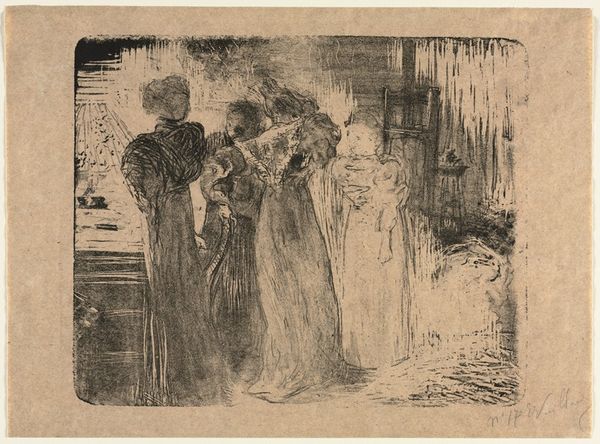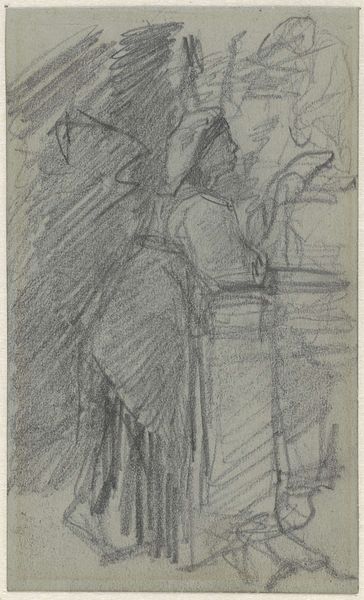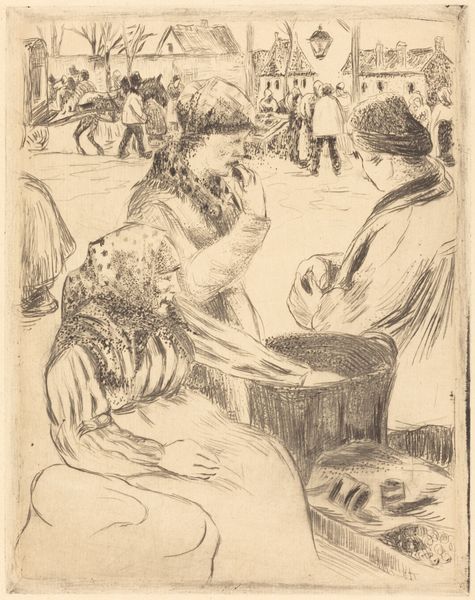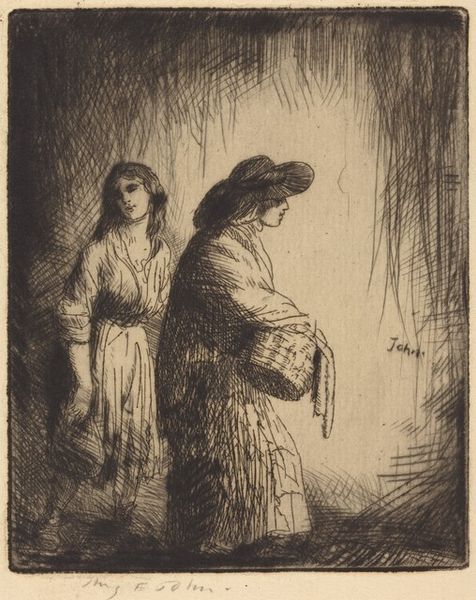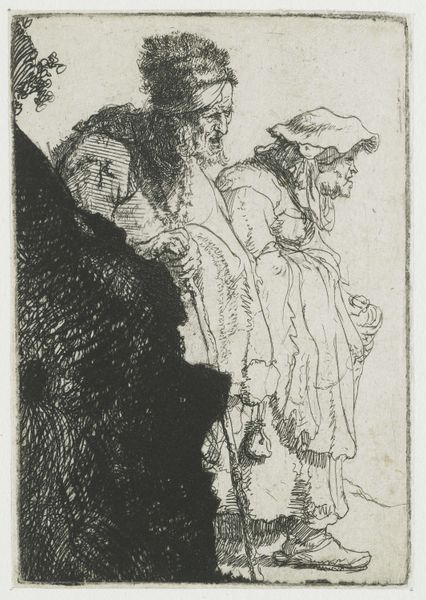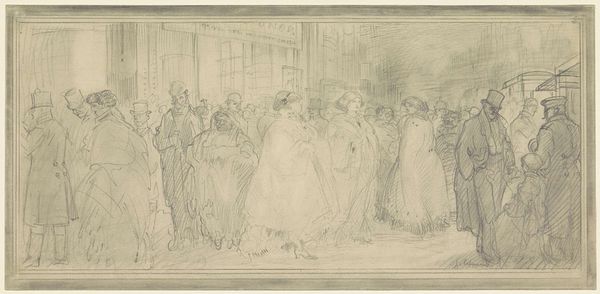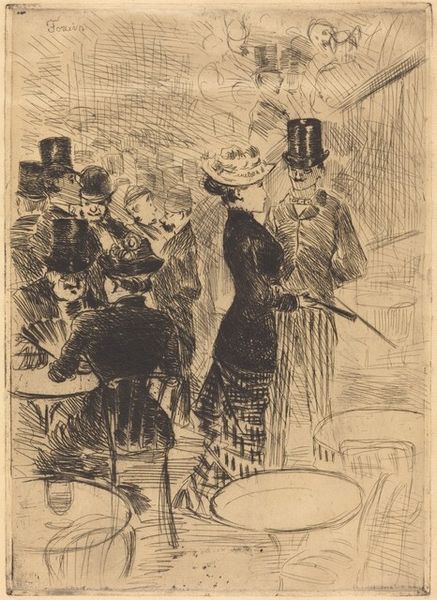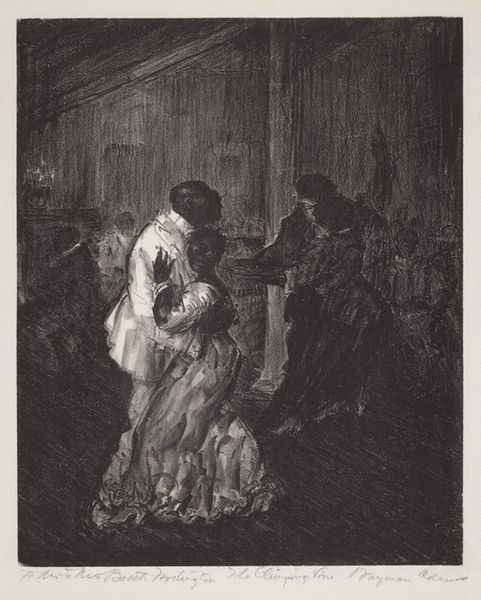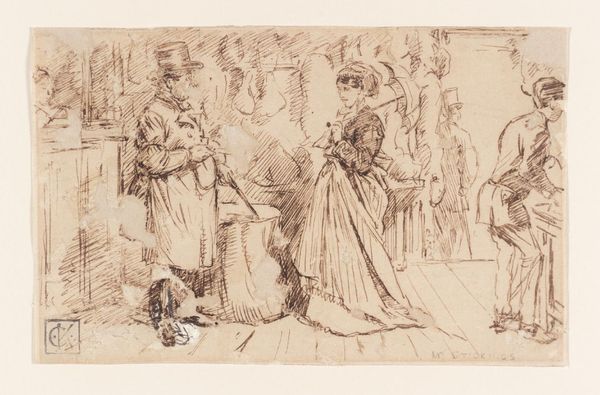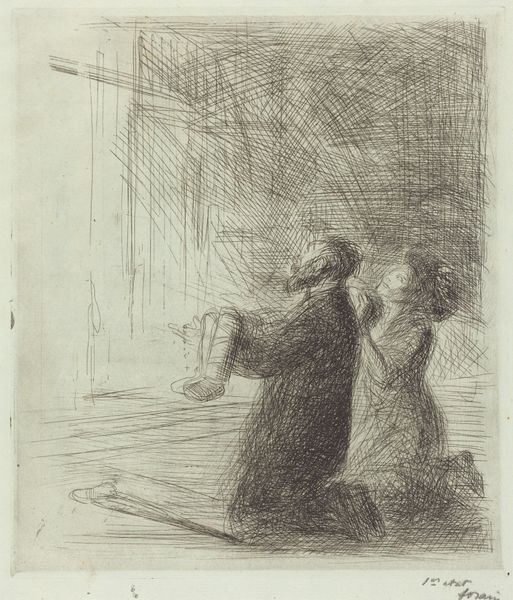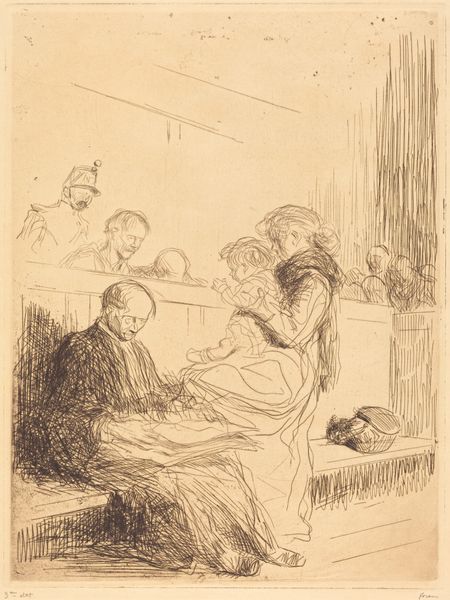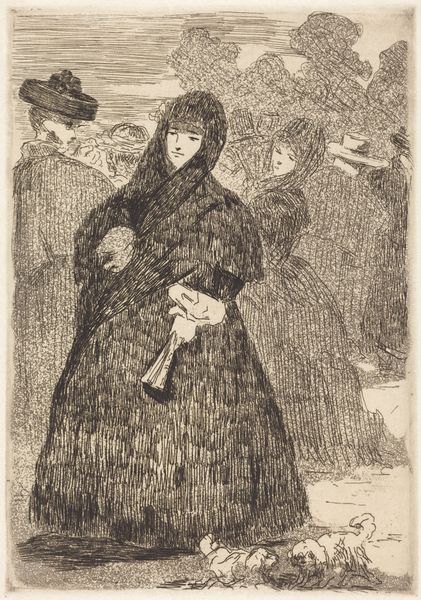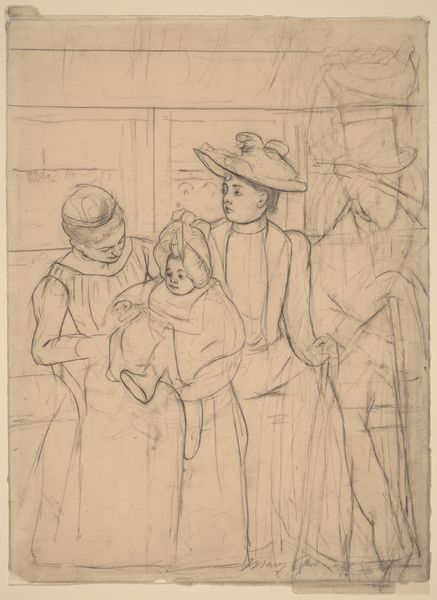
Dimensions: height 351 mm, width 253 mm
Copyright: Rijks Museum: Open Domain
Editor: This drawing, “Bloemenmeisjes in Londen” or "Flower Girls in London," by Pieter Dupont, dated between 1880 and 1911, is rendered in pencil. I'm immediately struck by the depiction of labor and the suggestion of social class, but what's your interpretation? Curator: This piece invites us to consider the representation of working-class women within the social fabric of late 19th-century London. Dupont’s choice to depict these flower girls, specifically, encourages questions about labor, visibility, and the economic realities facing women at the time. Does the composition—the arrangement of the figures, their clothing, their apparent demeanor—suggest anything about their social standing or lived experiences? Editor: Well, they are all wearing hats. They appear quite elegant, even though their work is presumably to sell flowers in the street, but it could be construed that they are middle-class. The description also has "One Penny Each", suggesting that each of them sells flowers at this price, or that they could potentially all be under the supervision of a company selling "cheap flowers". Curator: Precisely. These sartorial details are crucial! Clothing becomes a signifier, a means of both survival and potential subversion. By depicting them with certain elegance, Dupont blurs easy categorizations and perhaps even critiques the rigid class structures of the time. Consider the broader socio-political climate of London at that moment, especially the growing visibility of women in public life, often confined to very specific roles. Editor: So, Dupont isn’t just showing us flower girls, but maybe challenging our assumptions about who they are and their place in society? Curator: Exactly! The work invites us to deconstruct prevailing ideologies, asking what it meant to be a working-class woman striving for visibility and autonomy within the constraints of Victorian society. This shifts our viewing of the "genre-painting", as we examine deeper into how those women challenged traditional assumptions. Editor: That reframes my perspective entirely! Seeing the intersection of gender, class, and representation really opens up a whole new level of appreciation. Curator: It does for me as well. And hopefully makes us look differently at the women we pass every day on the street, wondering about their life and experience.
Comments
No comments
Be the first to comment and join the conversation on the ultimate creative platform.
